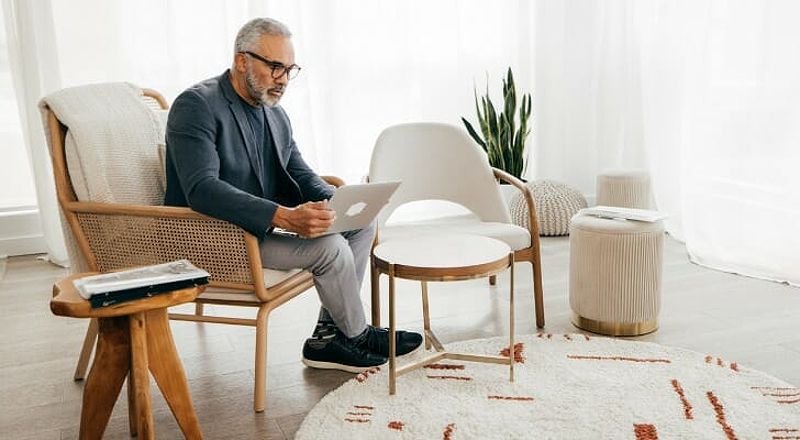Finding The Perfect Big House For Your Big Family: A Guide To Spacious Living And Family-friendly Features
The search for a big house for a big family can be a daunting task, requiring careful consideration of both practical and emotional factors. Finding a home that not only provides ample space but also fosters a sense of community and togetherness is essential. This search is further complicated by the fact that 25% of families struggle to find a home that meets their unique needs within their budget. With the right approach and a clear understanding of what you want, you can turn this complex process into an exciting journey toward finding your ideal family home.
Defining Your Needs: What Makes a Big House for Big Family Perfect?
Beyond Square Footage: Understanding Your Family’s Needs
When embarking on the journey to find the perfect big house for your big family, it’s essential to understand that “big” is subjective. Each family’s needs will differ based on their size, lifestyle, and future plans. Start by identifying the number of bedrooms and bathrooms necessary to ensure comfort and privacy for all family members.
Assessing Your Family’s Size and Structure
Begin by taking an inventory of your family structure. How many people will be living in the house? Consider not just immediate family but also extended family who may visit frequently. This assessment will help you determine the number of bedrooms and bathrooms needed. For example:
- Immediate Family: If you have a family of four, you may need at least three bedrooms—one for the parents, one for each child, and perhaps an extra room for guests or an office.
- Extended Family: If grandparents are likely to visit often or stay with you, an additional bedroom becomes crucial.
Comfort and Privacy
Next, think about how many bathrooms you would need to maintain a sense of comfort and privacy. Multiple bathrooms can significantly reduce morning chaos. Aim for a configuration that minimizes wait times, especially during peak hours:
- Master Suite: A master bedroom with an en-suite bathroom offers privacy for parents.
- Children’s Bathrooms: Depending on the number of children, consider a layout where children share a bathroom but also have access to a guest bathroom.
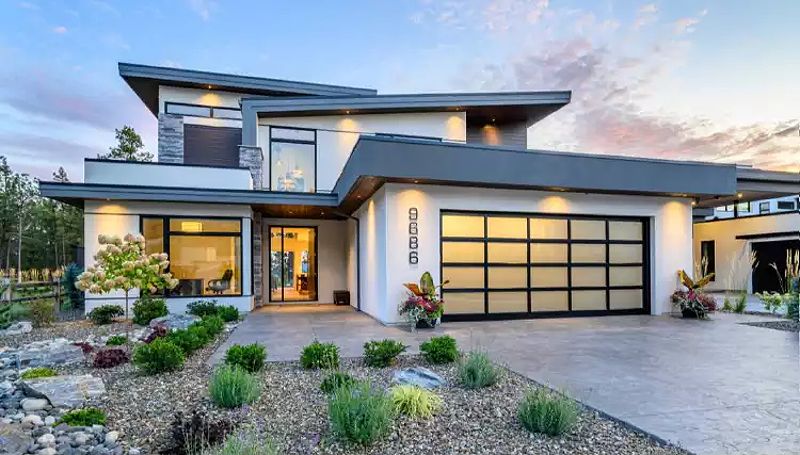
Living Spaces: Gathering and Individual Areas
In addition to bedrooms and bathrooms, think about how many common areas you need. Would an open-concept layout work best for family gatherings, or do you prefer distinct rooms for different activities?
- Family Room: A dedicated family room can serve as a space for relaxation and bonding.
- Living Room: A more formal living room can be used for entertaining guests or family gatherings.
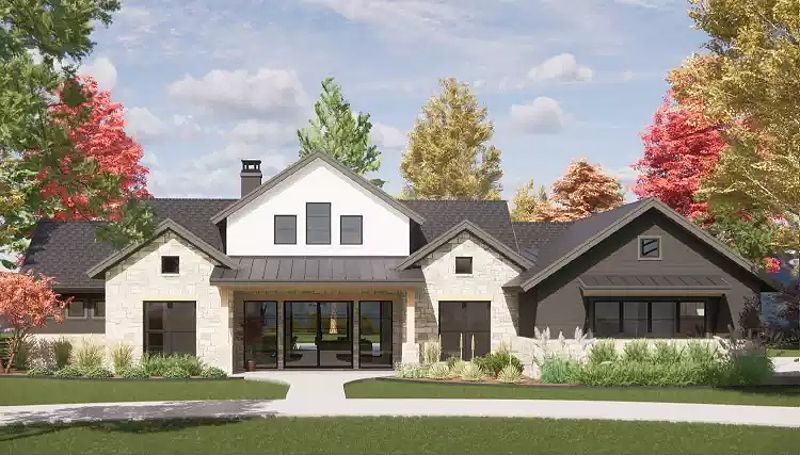
It’s also crucial to factor in the unique needs of your family. For example, if you have teenagers, a study space might be necessary. Younger children may require a playroom to keep their toys organized. By clearly defining these needs, you can narrow your search and find a home that truly fits your family’s lifestyle.
The Big Picture: Visualizing Your Family’s Future in a Big House
As you explore potential homes, visualize how your family will use the space now and in the future. Consider your lifestyle and the activities that matter most to your family. Will you host family gatherings, game nights, or holiday parties?
Envisioning Future Growth
Think about how your family might grow or change in the coming years. Will you have more children? Will your teenagers need more space as they become young adults?
- Flexibility: Look for homes that offer flexible spaces that can adapt to changing needs. An office can become a nursery, or a playroom can transition into a study area.
Lifestyle Considerations
Think about how the layout of the home can accommodate your lifestyle. If your family enjoys cooking together, a large kitchen with a central island could be ideal. If you have pets, consider whether the home has easy access to a yard or nearby parks.
Consider creating areas that cater to specific interests:
- Hobbies: Designate spaces for crafting, music, or other hobbies that family members enjoy.
- Family Gatherings: Consider how a large dining room or outdoor space can accommodate your loved ones during celebrations.
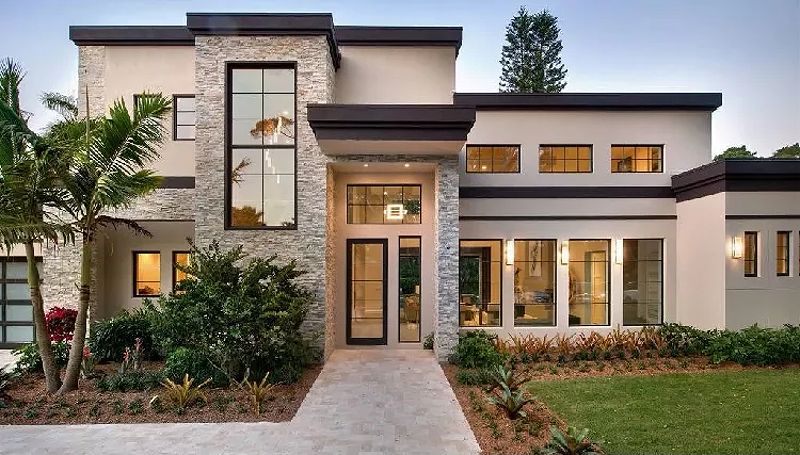
This foresight will help you make a more informed decision, ensuring that your new big house for a big family is not just a place to live but a place to thrive.
Essential Features for a Family-Friendly Big House
Multiple Bedrooms and Bathrooms: Privacy and Convenience
A big house for a big family should prioritize privacy and convenience. Consider homes with multiple bedrooms and bathrooms, particularly those with en-suite options. This setup not only enhances comfort but also fosters independence among family members.
The Importance of En-Suite Bathrooms
When evaluating bedroom configurations, think about how they can accommodate various family dynamics. For instance, if you have young children, you may want their rooms close to yours, while teenagers might prefer more distance for privacy. En-suite bathrooms can provide each family member with their own space, allowing for more streamlined morning routines.
Different Bedroom Configurations
Consider different bedroom configurations based on your family’s needs:
- Separate Wings: Some homes have separate wings for children and adults, providing privacy for both groups.
- Guest Rooms: A guest room can be a versatile space for visitors, or it can be transformed into an office or additional play area when not in use.
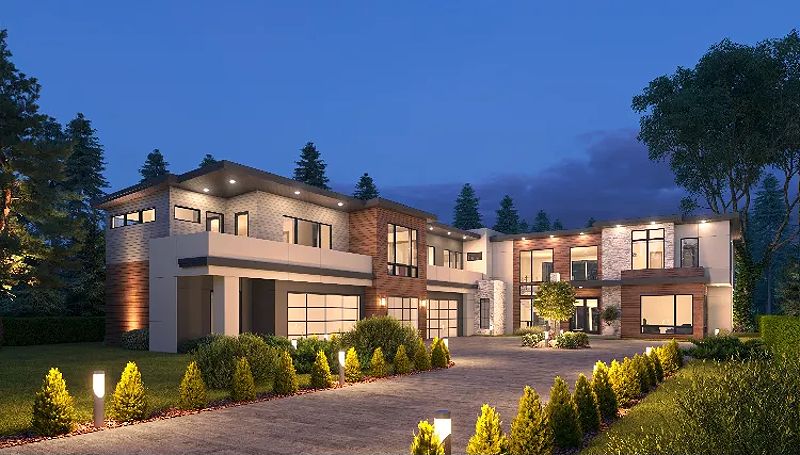
Spacious Living Areas: Creating a Hub for Togetherness
Open-plan living areas are essential in fostering a sense of togetherness within a big house. Look for homes that feature:
Large Kitchens: The Heart of the Home
A spacious kitchen serves as the heart of the home, where families can gather to cook and eat together. Look for features such as:
- Island Countertops: An island can provide additional workspace and seating, making it easier for family members to interact while preparing meals.
- Open Layouts: A kitchen that opens into the dining area or living room encourages family interaction.
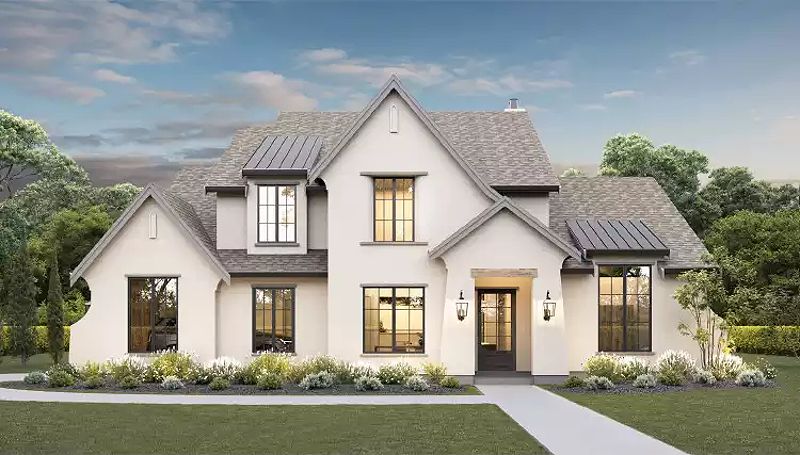
Dedicated Family Rooms: The Gathering Space
Having a dedicated family room is crucial for creating a space where everyone can relax and spend time together. Consider the following features:
- Comfortable Seating: Look for homes with ample seating options, such as sectional sofas or recliners, to accommodate everyone.
- Entertainment Options: A space equipped for movie nights or game sessions, complete with a media center, can enhance family bonding.
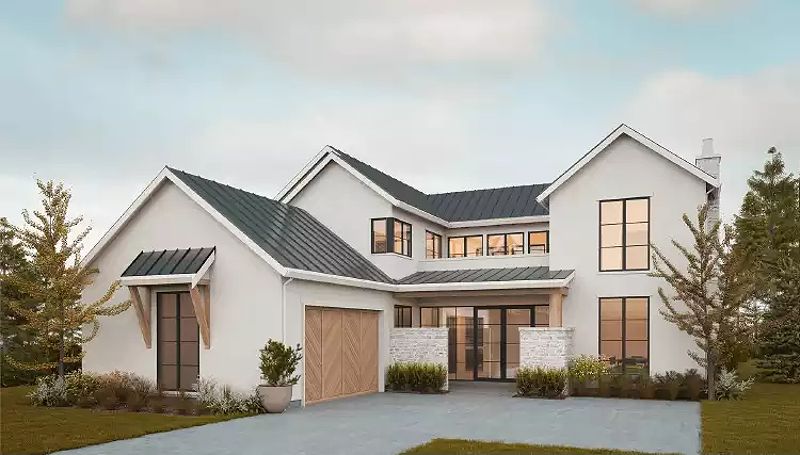
Dedicated Family Spaces: Nurturing Individuality and Shared Interests
Designating spaces for various activities can greatly enhance your family’s living experience. Consider including:
Playrooms: Keeping Toys Organized
A space dedicated to play can help keep toys organized and create a safe environment for younger children. Features to consider:
- Safety Measures: Ensure the playroom is child-proofed with soft furnishings and non-toxic materials.
- Storage Solutions: Built-in shelving or storage bins can help keep the space tidy.
Media Rooms: A Cozy Spot for Entertainment
Create a cozy spot for movie nights or gaming sessions, complete with comfortable seating and soundproofing.
- Lighting: Consider blackout curtains and adjustable lighting for an optimal viewing experience.
- Equipment: Ensure there is sufficient wiring and space for entertainment systems.
These dedicated areas promote individuality while allowing families to come together for shared experiences, making your big house feel like a true home.
Outdoor Living: Extending Your Living Space
Don’t overlook the importance of outdoor living spaces. A big house for a big family should ideally feature patios, decks, or spacious yards that extend your living area. These outdoor spaces provide opportunities for:
Physical Activity: Encouraging Outdoor Play
Encourage your family to engage in outdoor play, gardening, or sports. Consider features such as:
- Play Equipment: Swing sets, slides, or climbing structures can provide hours of fun for kids.
- Gardening Space: Raised garden beds can be a great way to involve the family in gardening activities.
Relaxation: Creating a Tranquil Space
Create a tranquil space for relaxation, complete with seating and landscaping that promotes a peaceful atmosphere. Features to consider:
- Seating Areas: Comfortable outdoor furniture can create a cozy nook for reading or enjoying the sunset.
- Landscaping: Incorporate plants and flowers that are easy to maintain, providing beauty without excessive upkeep.
An inviting outdoor area can significantly enhance your family’s lifestyle, making it an essential feature of any big house.
Design Considerations for a Big House for Big Families
Layout and Flow: Promoting Easy Movement and Natural Flow
The layout of your big house is crucial in promoting a harmonious living environment. A well-planned design should facilitate easy movement throughout the home. Consider the following:
Open Floor Plans: Encouraging Interaction
Open floor plans encourage natural flow between spaces, making it easier for families to interact. Look for designs that eliminate unnecessary walls and barriers.
- Defined Spaces: While open layouts are great for interaction, ensure that spaces are still defined enough to serve their intended purposes.
Traffic Patterns: Minimizing Congestion
Evaluate how doorways and hallways are positioned to minimize congestion during peak hours, such as mornings and evenings.
- Strategic Placement: Consider the placement of bathrooms and bedrooms in relation to common areas to reduce foot traffic and waiting times.
A thoughtfully designed layout will support your family’s daily routines and enhance their overall living experience.
Storage Solutions: Keeping a Big House Organized and Clutter-Free
Ample storage is vital for maintaining an organized and clutter-free environment in a big house. Consider homes that offer:
Walk-in Closets: Maximizing Space
Walk-in closets provide ample space for clothing and accessories, helping to keep personal items organized. Look for features such as:
- Custom Shelving: Adjustable shelving and hanging options can maximize the use of space.
- Organization Systems: Built-in organizers can help keep everything in its place.
Built-in Storage: A Practical Solution
Look for homes with built-in cabinetry or shelving that can accommodate books, toys, and other belongings. This can include:
- Pantries: A well-organized pantry can significantly improve kitchen efficiency.
- Mudrooms: Consider homes with mudrooms that offer storage for shoes, coats, and backpacks, keeping the main living areas clutter-free.
Establishing a system for organizing and decluttering will make it easier to maintain a peaceful atmosphere in your big house.
Accessibility and Safety: Creating a Safe Haven for All
When searching for a big house for a big family, prioritize accessibility and safety features. This is especially important if you have young children or elderly family members. Consider:
Ramps and Grab Bars: Enhancing Mobility
Features such as ramps and grab bars can enhance mobility and safety for all family members. Look for:
- Entry Options: Homes with multiple entry points that include ramps for easy access.
- Bathroom Safety: Grab bars in bathrooms can prevent falls and enhance safety.
Non-Slip Flooring: Reducing Risks
Opt for flooring that minimizes the risk of slips and falls, particularly in high-traffic areas like kitchens and bathrooms.
- Material Choices: Consider materials that provide good traction, especially in areas prone to spills.
Incorporating these safety features will ensure that your big house is a safe haven for everyone.
Tips for Making the Most of Your Big House
Organization and Decluttering: Creating a Sense of Order and Efficiency
Once you’ve settled into your big house, the next step is to establish organization and decluttering routines. Here are some practical tips:
Create a Storage System: Maximizing Vertical Space
Develop a system for storing belongings that maximizes vertical space and minimizes clutter. Consider:
- Vertical Shelving: Use shelves that reach the ceiling to take advantage of all available space.
- Under-Bed Storage: Utilize the space under beds for seasonal clothing or extra linens.
Regular Decluttering: Maintaining Peace
Schedule periodic decluttering sessions to maintain a peaceful and functional living environment. This can include:
- Seasonal Cleanouts: Go through each room at the change of seasons to evaluate what is still needed.
- Donation Drives: Encourage family members to donate items they no longer use, fostering a sense of community and responsibility.
An organized home will not only enhance efficiency but also foster a sense of calm and order.
Decorating and Furnishing: Creating a Warm and Inviting Atmosphere
A big house can feel impersonal if not decorated thoughtfully. Here are some strategies to create a warm and inviting atmosphere:
Cohesive Color Palette: Creating Unity
Use a consistent color scheme throughout the home to create a sense of unity. Consider:
- Warm Tones: Colors like soft yellows, warm grays, and earthy tones can create a welcoming environment.
- Accent Walls: Use bold colors or patterns on one wall to add character without overwhelming the space.
Comfortable Furniture: Balancing Style and Comfort
Choose furniture that is both stylish and comfortable, ensuring that your family feels at home.
- Functional Pieces: Consider multi-functional furniture, like ottomans with storage or convertible sofas, to maximize space.
- Textiles: Incorporate soft textiles like throw pillows, blankets, and area rugs to enhance comfort.
Incorporating personal touches, such as family photos or artwork, will further enhance the inviting atmosphere of your big house.
Creating a Sense of Community: Fostering Togetherness in a Spacious Home
To cultivate a sense of community within your big house, consider implementing the following practices:
Designated Gathering Areas: Encouraging Connection
Create spaces for family gatherings, game nights, and shared experiences. Consider:
- Open Dining Areas: A large dining table can serve as a central hub for family meals and celebrations.
- Outdoor Spaces: Utilize patios or decks for barbecues and outdoor activities.
Family Rituals: Building Traditions
Establish traditions that bring your family together, whether it’s a weekly movie night or a monthly family dinner.
- Shared Activities: Encourage family members to participate in cooking, game nights, or movie marathons, fostering a sense of belonging.
- Celebrating Milestones: Create special rituals for birthdays, anniversaries, and other significant events that everyone can look forward to.
By fostering these connections, your big house will become a true home, filled with love and togetherness.
FAQ
Q: How much square footage do I need for a big family?
A: The ideal square footage varies based on your family’s size and needs. However, a good starting point is 3,000 square feet or more.
Q: What are some common mistakes to avoid when buying a big house?
A: Avoid purchasing a home that is too large for your budget or one that lacks essential features for your family’s needs.
Q: How can I make a big house feel cozy and inviting?
A: Use warm colors, comfortable furniture, and personal touches to create a welcoming atmosphere.
Conclusion
Finding the perfect big house for your big family is a journey filled with excitement and careful consideration. By defining your unique needs, prioritizing essential features, and thoughtfully designing your living spaces, you can create a home that accommodates your growing family while fostering lasting memories and a sense of belonging. Start your search with a clear vision, and you’ll be well on your way to discovering the big house that will become the heart of your family’s story.
MORE FROM pulsefusion.org











